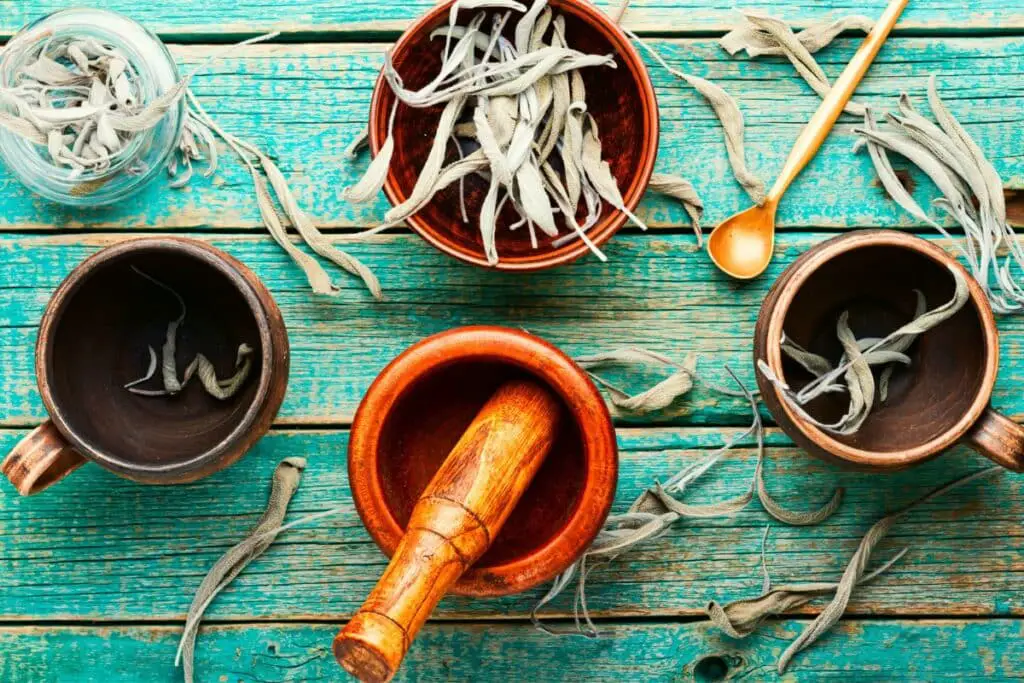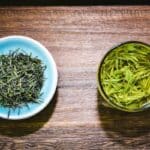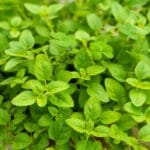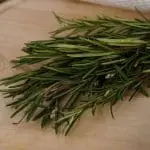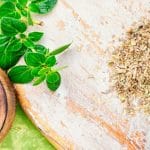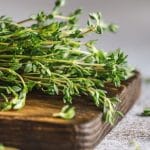In summary, the best alternatives to fenugreek are rosemary, marjoram, thyme, oregano, etc. Start with a small amount of the reserve and adjust to taste to maintain the authentic flavor in your dishes.
Garden sage is the most common type of sage used in cooking and is popular in a range of meat, poultry, pasta, fish, and vegetable recipes.
Depending on the time of year and the type of cuisine you usually cook, sage might not be something you generally keep in the pantry. If your recipe calls for a dash of sage and you don’t have any, using an alternative herb with similar flavor notes can spruce up your dish just as well.
Here, we’ll dig into the best dried or fresh sage substitute for your recipe and how to use the different types of herbs for the best flavor applications.
What is Sage?
Whether you’re whipping up Italian cuisine, a holiday turkey stuffing, making your own sausage, or making sage butter to pair with vegetables or fish, this leafy green herb will add aromatic woody, pine, and savory notes to your dish with a slightly sweet undertone.
This Mediterranean herb is part of the mint family and has feathery soft oblong leaves. It pairs well with onion, dairy, garlic, and fatty meats and can be used as fresh or dried sage, or as ground sage for rubs.
How to Cook with Fresh vs Dried Sage
Fresh sage can be a pretty potent herb when used raw in salads, garnishes, or dressings. Use it sparingly as it can overpower delicate flavors easily.
When using the fresh leaves in a cooked dish, add them towards the end of the cooking time. This will ensure you get the best flavor out of the aromatic herbs and will prevent bitterness.
In contrast, when using dried and rubbed sage, you need to add it at the beginning of the cooking time. This gives the dried herbs time to infuse and balance out with other flavors in the dish.
How to Substitute Dried vs Fresh Herbs
If your recipe calls for dry sage, use another dried herb as a substitute. In the same way, it is best to replace fresh herbs if your recipe calls for fresh sage.
If you don’t have herbs in the form called for in the recipe, you can replace dried herbs for fresh in certain cases, but you will have to adjust the ratio you use.
As a general rule of thumb, one tablespoon of fresh herbs is equivalent to one teaspoon of the dried version. If, for example, you are making a stew that requires one tablespoon of fresh sage, use one teaspoon of dried sage (or an alternative herb) instead.
Best Sage Substitutes
#1. Marjoram
Fresh or dried marjoram is the perfect sage leaf substitute since it’s also a mint family member and is used widely in Mediterranean cooking. It has a similarly warm and woody flavor with citrusy, floral undertones, and slightly bitter notes.
Marjoram has a milder taste and won’t retain its flavor when cooked for long periods. For this reason, it’s best to add fresh marjoram towards the end of the cooking time.
Quantity: You can substitute fresh marjoram in equal quantities. Similarly, replace dried marjoram in equal amounts when using it as a dried sage substitute.
Best for: Sausages, stuffing, meaty dishes, stews, poultry, vegetables, and tomato-centric pasta dishes.
See more: What can I substitute for marjoram?
#2. Rosemary
Rosemary’s tough needle-like leaves are incredibly aromatic with a strong woody pine flavor. Since fresh rosemary is generally pretty easy to find, it makes for an easy fresh sage alternative.
It adds a lovely aromatic warmth and richness and pairs well with a range of other herbs, spices, and flavorings. If you use the whole stem during cooking to impart flavor, remember to remove it before serving since the woody stem is not edible.
Quantity: Start by using only a ¼ of the amount your recipe calls for since rosemary can quickly become overpowering. After giving it enough time to infuse, add a little more to taste if necessary.
Best for: Meat, poultry, roast chicken, savory bread, vegetables, and potato dishes
See more: What can I use instead of rosemary?
#3. Thyme
Also a mint-family cousin, fresh thyme has tiny leaves that bring an earthy taste with peppery, and aromatic floral notes to savory dishes. Fresh or dried thyme are however both suitable to substitute sage.
The delicious herb can be used in a similar way to rosemary – on the sprig. Alternatively, only use the small leaves without the stem. Keep in mind that if you added the entire sprig during the cooking process (or when roasting meat and vegetables) you should remove it before serving.
Quantity: Replace thyme in equal quantities
Best for: Meat, game, poultry, chicken, pasta dishes, savory baked goods, and root vegetables
See more: Replacement for thyme
#4. Oregano
Oregano is another great substitute for sage. It has a delicious deep earthiness and pepperiness, although it is a little stronger in flavor. Dried and fresh oregano are both suitable substitute for sage leaves and are especially popular in Mediterranean cooking.
Quantity: Substitute oregano in equal quantities
Best for: Salad vinaigrettes, chicken, fish, pizza, pasta sauces, and stews
#5. Tarragon
Tarragon has an aromatic earthy pepperiness with hints of citrus and anise. It is preferred in its fresh form by most chefs since it loses a lot of its potency once dried.
Add the fresh leaves towards the end of the cooking time and bruise them slightly to help release some of the aromatic oils.
Quantity: Replace tarragon in equal measures
Best for: Chicken, fish, sauces, vegetables, and egg dishes
See more: Substitute for fresh tarragon
#6. Poultry Seasoning
Poultry seasoning is a herb and spice mix that contains dried sage together with marjoram, rosemary, nutmeg, and black pepper. Since sage forms part of the blend, it will provide similar flavor notes to your dish.
This sage replacement is best for bold recipes such as seasoning poultry and turkey rather than delicate dishes.
When using a herb and spice blend, take into account that it will most likely replace most of the other seasonings in your dish.
For example, if your recipe calls for sage and rosemary, leave out both herbs if you are using a seasoning blend instead. Not doing this can result in unbalanced and overpowering herbs or spices.
Quantity: If you are replacing dried sage, use equal quantities of poultry seasoning. Use one teaspoon of the seasoning in place of one tablespoon of the fresh herb.
Best for: Poultry dishes, rubs, stews, and vegetable dishes
#7. Italian Seasoning
Italian seasoning in another dry blend including a mix of sage, marjoram, basil, thyme, oregano, and rosemary. The delicious blend has woody, earthy, and peppery notes that can pair well with a diverse range of foods.
As with poultry seasoning, remember that the blend will most likely replace the majority of the herbs in the dish since it already contains such a variety.
Quantity: If you are replacing dried sage, use equal quantities of poultry seasoning. Use one teaspoon of the seasoning in place of one tablespoon of the fresh herb.
Best for: Vinaigrettes, meat, poultry, pasta dishes, stews, and vegetable dishes
#8. Savory
Savory is available in summer savory and winter savory varieties. Both types can be used as a replacement, although summer savory has a slight minty undertone while winter savory has a bit of a bite.
This herb isn’t quite as common as the other varieties on the substitution list but can be just as successful if you have it on hand.
Quantity: Use summer savory in equal quantities. If you use winter savory, use only half the amount called for in your recipe.
Best for: Poultry, lamb, and fish dishes as well as beans, sausages, pies, stews, and barbeque meat. Summer savory is good with lighter dishes including eggs and summer veggies.
#9. Basil
Basil is a popular herb to mix into salads, make pesto, and add to cooked recipes. It comes in different varieties but generally adds a peppery, slightly bitter, and mildly sweet aromatic touch.
Depending on the variety it can also add lemony, anise, cinnamon, or mint undertones. The dried form can be fairly strong, so remember to use less when using the dried herb.
This is a good substitute for Italian dishes and Mediterranean cuisine. Basil is the herb of choice when replacing sage in fruity desserts and shortbread.
Quantity: Use an equal amount of fresh basil when replacing fresh herbs or half the amount of dried basil when replacing dried herbs.
Best for: Sauces, pasta dishes, salads, salad dressings, beef, veal, chicken, and vegetable dishes
#10. Bay Leaf
Bay leaf, or laurel, has a stronger flavor with pine undertones and a little bitterness. Although the taste is not quite the same, it can provide the aromatics needed in your dish.
It can be used dried or fresh and is generally added to stews or curries. Many people prefer removing the leaves before serving since they are not pleasant to bite on. Bay leaf is not ideal to use in salads, but rather in dishes where the flavor is infused during cooking.
Quantity: If you are using dried bay leaf, use sparingly. One dried bay leaf is equivalent to a quarter teaspoon of ground leaves, so using too much can quickly overpower other delicate flavors.
We recommend adding one or two whole leaves and removing them as soon as the flavor has sufficiently infused into your dish.
Best for: Soups, stews, and curries
FAQs
What fruit does sage pair well with?
Sage pairs well with apples and pears, and can also be paired with pineapple, peaches, and other sweet fruits.
Do sage and citrus go well together?
Sage pairs well with citrus flavors. Sage and orange can be used in fish and poultry dishes, flavored butter, and even marmalade.
What desserts can I use sage in?
Sage can be used as a light flavoring in shortbread, apple or pear tarts, custard tarts, and crumbles. It can also be used to lightly flavor whipped cream.
What does sage taste similar to?
Sage tastes similar to thyme, with hints of pine and eucalyptus, while it doesn’t have an exact match. Sage has a unique flavor that can be described as earthy, slightly peppery, and aromatic.
Conclusion
Herbs add incredible aromatics to almost any dish when used in the right amounts and paired correctly with other flavors. Although not all the sage substitute options mentioned above taste the same, they can bring a similar aromatic touch to your dish to give it life and depth.
When choosing the best substitute for sage, keep in mind that dried herbs should always be used in smaller amounts when replacing their fresh counterparts. Additionally, not all herbs are equally suitable to use fresh in salads and garnishes.
Enjoy experimenting and don’t be scared to explore new flavors to pair with your favorite recipes.
See more: How to dry sage
*Image by Nikolay_Donetsk/depositphotos
